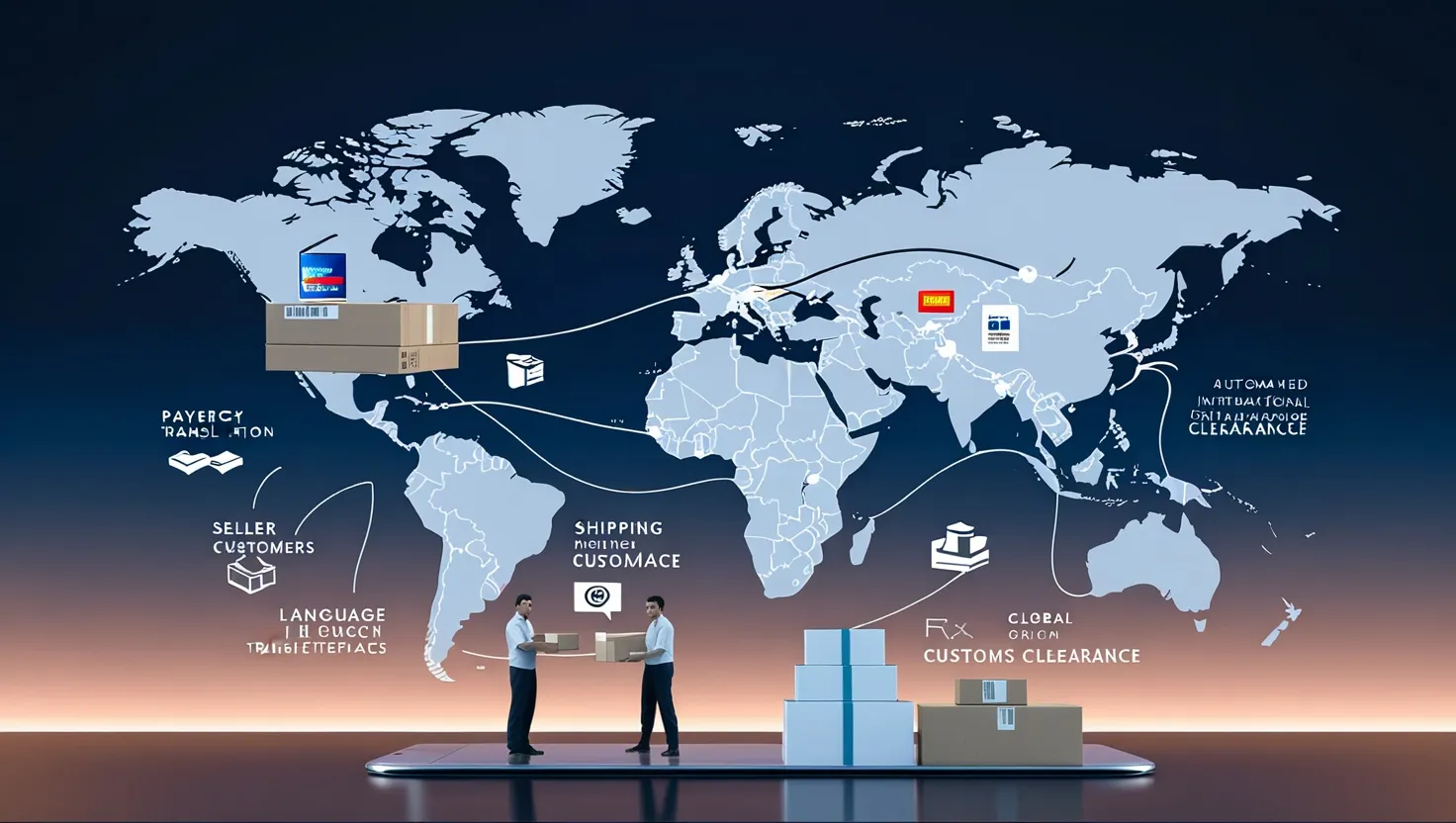Cross-border e-commerce has become a powerful avenue for businesses to expand their reach and tap into global markets. As the digital landscape continues to evolve, companies are finding innovative ways to overcome the challenges of selling internationally. Let’s explore six key strategies that are driving international sales and helping businesses thrive in the global marketplace.
One of the most crucial aspects of cross-border e-commerce is offering localized payment options and currency conversion solutions. When customers see prices in their local currency and can pay using familiar methods, it significantly reduces friction in the purchasing process. This strategy goes beyond simply displaying prices in different currencies – it involves integrating local payment gateways, digital wallets, and even alternative payment methods that may be popular in specific regions.
For example, in China, platforms like Alipay and WeChat Pay dominate the digital payment landscape. By offering these options, businesses can tap into a massive market of consumers who prefer these payment methods. Similarly, in parts of Africa, mobile money services are widely used, and integrating these can open up new opportunities for sales.
Currency conversion solutions also play a vital role in this strategy. Real-time currency conversion not only helps customers understand the true cost of their purchase but also protects businesses from exchange rate fluctuations. Some companies are even experimenting with dynamic pricing based on local economic conditions, further tailoring the shopping experience to each market.
How does your business currently handle international payments? Are you leveraging all available options to make purchasing as smooth as possible for your global customers?
Regulatory compliance is another critical factor in cross-border e-commerce. As businesses expand into new markets, they must navigate a complex web of international trade regulations, customs requirements, and tax laws. Automation tools have emerged as a game-changer in this arena, helping businesses stay compliant while streamlining their operations.
These tools can automatically calculate import duties and taxes, generate necessary customs documentation, and ensure that shipments meet all regulatory requirements. This not only reduces the risk of costly errors and delays but also frees up resources that can be better spent on core business activities.
Moreover, some advanced systems can even predict potential regulatory issues before they arise, allowing businesses to proactively address them. This level of foresight can be invaluable in maintaining smooth operations and avoiding disruptions to the supply chain.
“The secret of getting ahead is getting started.” - Mark Twain
This quote perfectly encapsulates the importance of taking that first step in expanding internationally. While the regulatory landscape may seem daunting, the right tools and strategies can make it manageable.
Language barriers can be a significant hurdle in cross-border e-commerce, particularly when it comes to customer service. Integrating multi-language customer service is not just about translation – it’s about providing a seamless, culturally appropriate experience for customers around the world.
Many businesses are leveraging AI-powered translation tools to provide real-time support in multiple languages. These tools have come a long way in recent years, offering nuanced translations that can capture the subtleties of different languages and dialects.
However, technology alone is not enough. Successful companies are also investing in building diverse, multilingual customer service teams. These teams not only provide language support but also bring cultural insights that can be invaluable in understanding and addressing customer needs.
Some businesses are taking this a step further by creating localized content hubs, FAQ sections, and self-service portals in multiple languages. This proactive approach can significantly reduce the volume of customer service inquiries while improving the overall customer experience.
When expanding internationally, businesses face a crucial decision: should they focus on established marketplaces or build their own direct-to-consumer platforms? Both approaches have their merits, and many successful companies are adopting a hybrid strategy.
Marketplaces like Amazon, Alibaba, and eBay offer instant access to a large customer base and established logistics networks. They can be an excellent way to test new markets with minimal upfront investment. However, they also come with increased competition and less control over the customer experience.
On the other hand, direct-to-consumer platforms allow for greater brand control and higher profit margins. They provide valuable first-party data that can inform marketing and product development strategies. However, they require significant investment in marketing and logistics to drive traffic and fulfill orders.
Many businesses are finding success by using marketplaces as a launchpad for international expansion, then gradually shifting focus to their own platforms as they build brand recognition and customer loyalty in new markets.
What’s your current strategy for international sales channels? Are you leveraging both marketplaces and direct platforms to maximize your reach?
Pricing is a complex issue in cross-border e-commerce, with factors like exchange rates, local competition, and market-specific costs all playing a role. Data-driven international pricing strategies have emerged as a powerful tool for businesses looking to optimize their pricing across different markets.
These strategies involve analyzing vast amounts of data – from competitor pricing and local economic indicators to customer behavior and historical sales data – to determine the optimal price point for each market. Some companies are using machine learning algorithms to continuously adjust prices based on real-time data, ensuring they remain competitive while maximizing profitability.
It’s important to note that effective pricing strategies go beyond simply converting prices to local currencies. They take into account local purchasing power, cultural factors, and even seasonal trends to create tailored pricing structures for each market.
“The goal is to turn data into information, and information into insight.” - Carly Fiorina
This quote underscores the importance of not just collecting data, but using it to drive meaningful business decisions, particularly in complex areas like international pricing.
Returns management is often overlooked in cross-border e-commerce strategies, but it can have a significant impact on customer satisfaction and loyalty. Implementing efficient returns management systems for overseas customers is crucial for long-term success in international markets.
The challenges of international returns are numerous – from high shipping costs and complex customs procedures to language barriers and differing consumer protection laws. However, businesses that can overcome these challenges often see increased customer trust and repeat purchases.
Some innovative approaches to international returns include partnering with local returns processing centers, offering “keep it” refunds for low-value items, and using data analytics to predict and prevent returns before they happen.
Additionally, clear communication about return policies, translated into local languages and easily accessible on product pages, can help set customer expectations and reduce unnecessary returns.
Have you considered how your returns policy might be perceived differently in various international markets? Are there ways you could streamline the process to improve customer satisfaction?
As we’ve explored these six strategies, it’s clear that success in cross-border e-commerce requires a multifaceted approach. From localized payment options and regulatory compliance to multi-language customer service and data-driven pricing, each element plays a crucial role in creating a seamless international shopping experience.
The beauty of these strategies is that they’re not just for large, established businesses. With the right tools and partnerships, even small businesses can leverage these approaches to compete on a global scale. Technology solutions have significantly reduced entry barriers, making international expansion more accessible than ever before.
However, it’s important to remember that there’s no one-size-fits-all solution in cross-border e-commerce. Each market has its unique characteristics, and successful businesses are those that can adapt their strategies to meet local needs while maintaining a consistent global brand.
As you consider your own cross-border e-commerce strategy, think about which of these approaches could have the biggest impact on your business. Are there areas where you’re already excelling? Where do you see the most room for improvement?
Remember, the global e-commerce landscape is constantly evolving. Staying ahead requires continuous learning, adaptation, and a willingness to embrace new technologies and approaches. But for those who can navigate these challenges, the rewards of successful cross-border e-commerce can be truly transformative.






